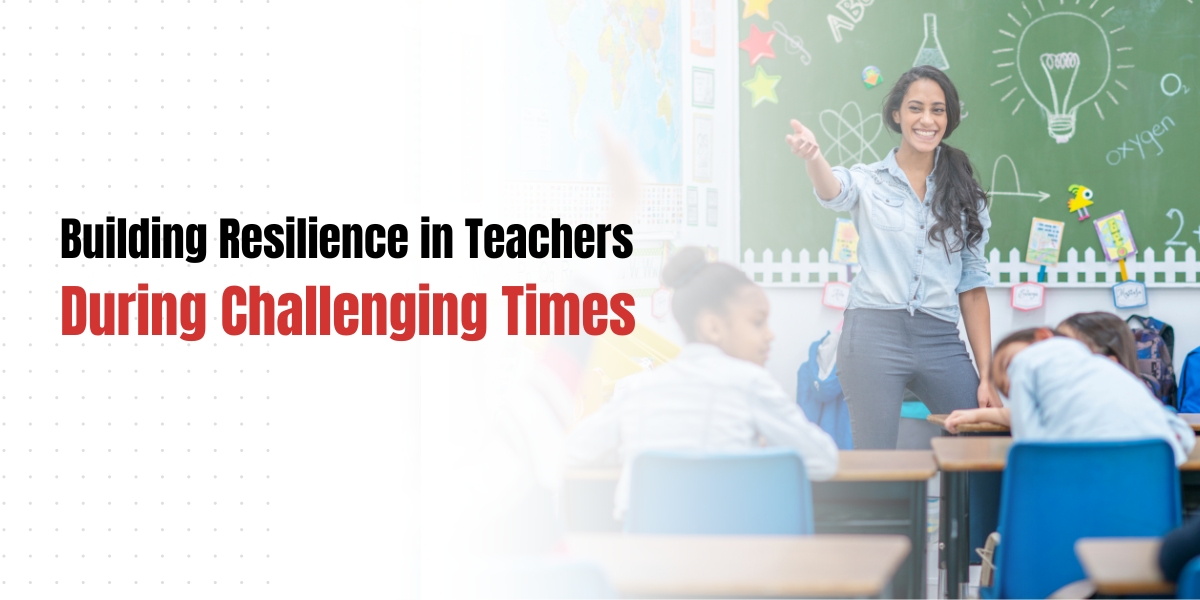
Building Resilience in Teachers During Challenging Times
Teaching is one such career that has been stressful, and in the recent past, it has taken a turn for the worse. Building student's resilience will help the teachers manage these challenges and continue being productive. What follows will be the manner by which resilience can be cultivated among teachers and why a Resiliency Program will be an important component towards this end.
Understanding the Challenges Teachers Face
A teacher contends with a million issues piling on the already pressured mental, emotional, and physical well-being:
- Heavy Workload: One has to handle a large class, prepare lesson plans, grade assignments, and do additional administrative requirements, all of which further add to the workload.
- Emotional Stress: Dealing with children's misbehavior and their emotional problems, and parents' behavior toward teachers, are emotionally draining situations.
- Pressures from Social and Economic Environments: Most of the teachers operate from under-resourced schools which have low-resource profiles and face minimal support, yet the students exhibit many social and economic challenges.
The Role of Resilience in Teachers
Resilience, then, is the ability to bounce back from adversity, the capacity to adapt to change and keep on going despite difficulty. For teachers, resilience has moved on from being able to weather the storm of harsh educational environments; it means thriving with success and fulfillment in their work. Here are some reasons why resilience is so important for educators:
It maintains good mental health and well-being
This makes such teachers better in dealing with stress and sustaining good mental well-being. Resilience helps the teachers cope with the pressures in daily teaching, which helps avoid burnout and other mental health problems that would arise from continued stress. This way, teachers are able to stay well and retain their passion for teaching, which in turn helps make things stable and supportive for the people they are teaching.
Fosters positive relationships
It will allow a teacher to have a positive relationship between a student, peer, and parents. Resilient teachers will have managed their conflicts and communicated clearly. It will create a classroom that is much more supportive to the student. Especially building community and belonging among the teachers and students.
Period of learning
A growth mindset is warranted to facilitate resilience; that is, he would be able to appreciate that a challenge brings goal achievement and development opportunities rather than being an obstacle in his way. Resilient teachers look for professional development, are open to new teaching approaches, and maintain a continuous improvement stance. Professional development enhances teaching skills but at the same time keeps them engaged and motivated to work.
Enhances student success
Teachers are very instrumental in their learners' lives. A resilient teacher will, even under very extreme conditions, provide the best possible support for their student's emotional and academic needs. This resilient teacher also acts as an excellent role model for their children to imitate through the provision of positive ways to cope, hence making them more academically resilient.
How to Build Resilience in Teachers
Encourage Self-care Practices
Good self-care practices build resilience. Pre-service and in-service teachers should be encouraged and supported to exercise, take a good diet, rest enough, and carry out activities that make them relax. These opportunities may be provided by the school or supported through wellness programs, mental health days, or through access to counseling services.
Keep Offering Opportunities of Professional Growth
Continuous professional development can help strengthen a teacher's resilience, but only if it focuses on acquiring new skills or strategies. This is particularly important in relation to the ever-rising challenges being presented to educators.
A positive school culture
The culture that supports teachers will help build their individual and collective resilience. It is envisaged that a positive culture would be one where teachers feel valued, respected, and trusted, and this will be done through the frequent setting of rewards and recognition, open communication, and institutional policies that really care about teachers.
Conclusion
Building resilience in teachers allows them in turn to build resilience in others. The Resiliency Program provides tools and strategies for the development of personal capability which would in turn result in more effective teaching and a positive educational atmosphere for all.